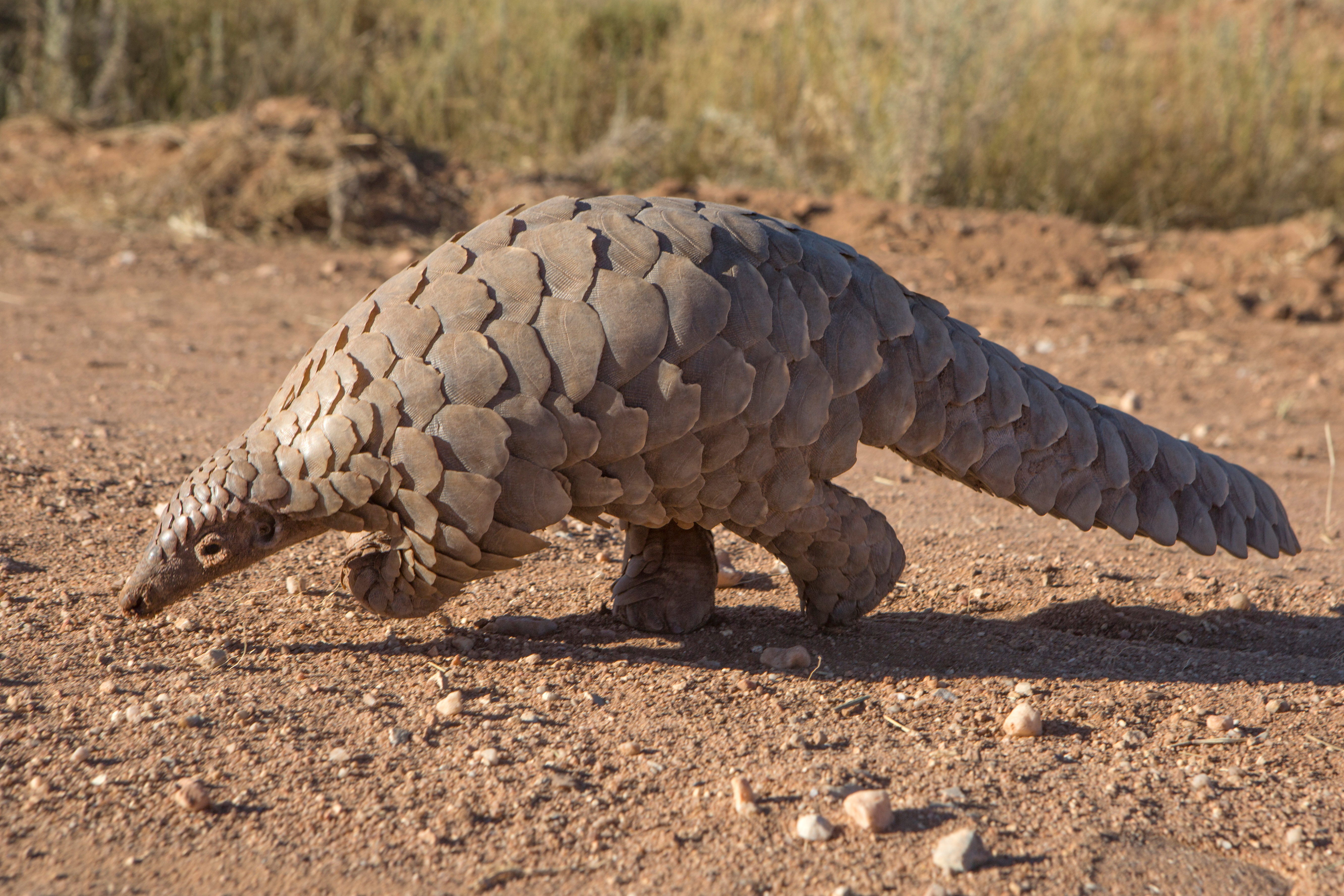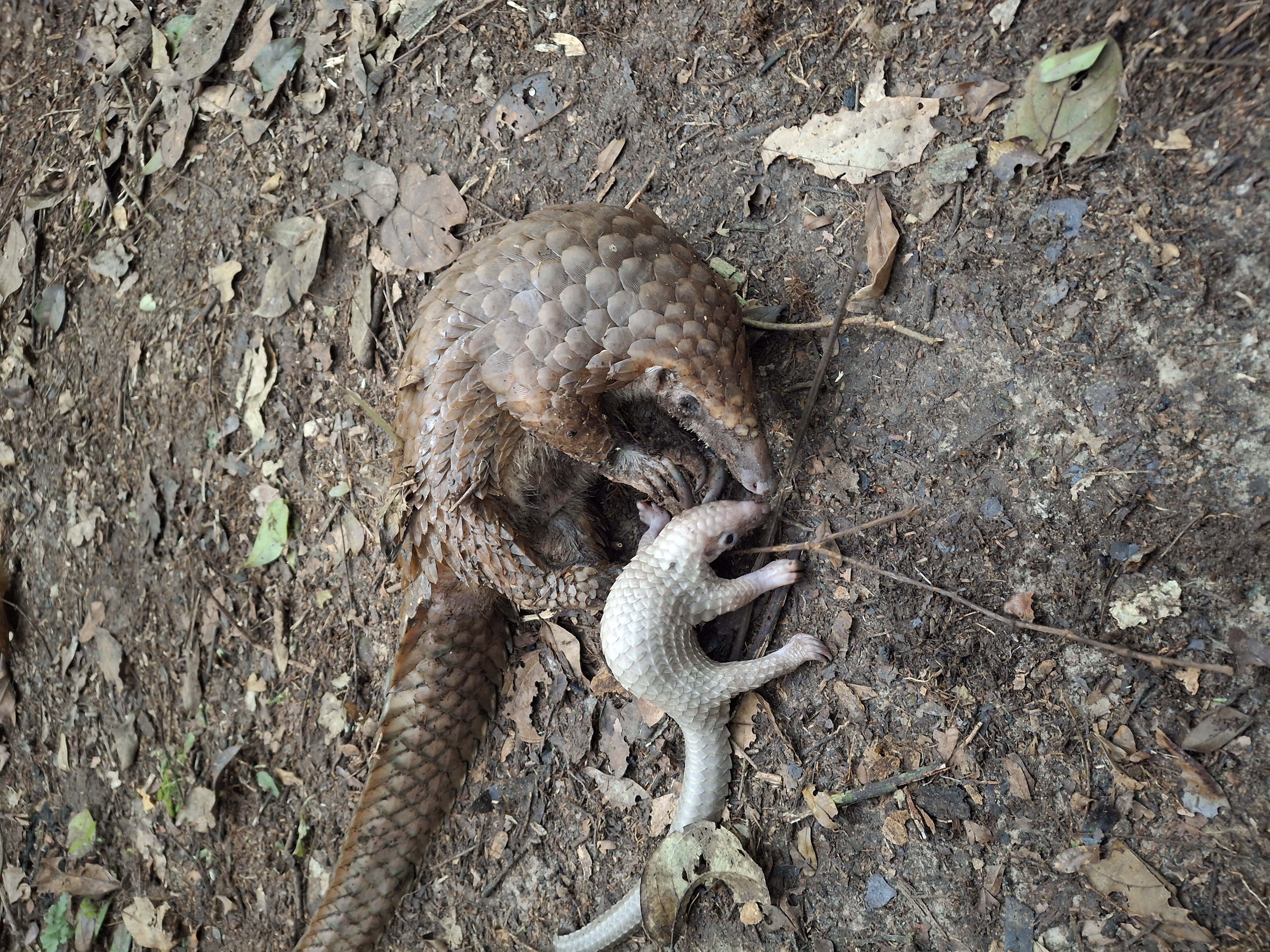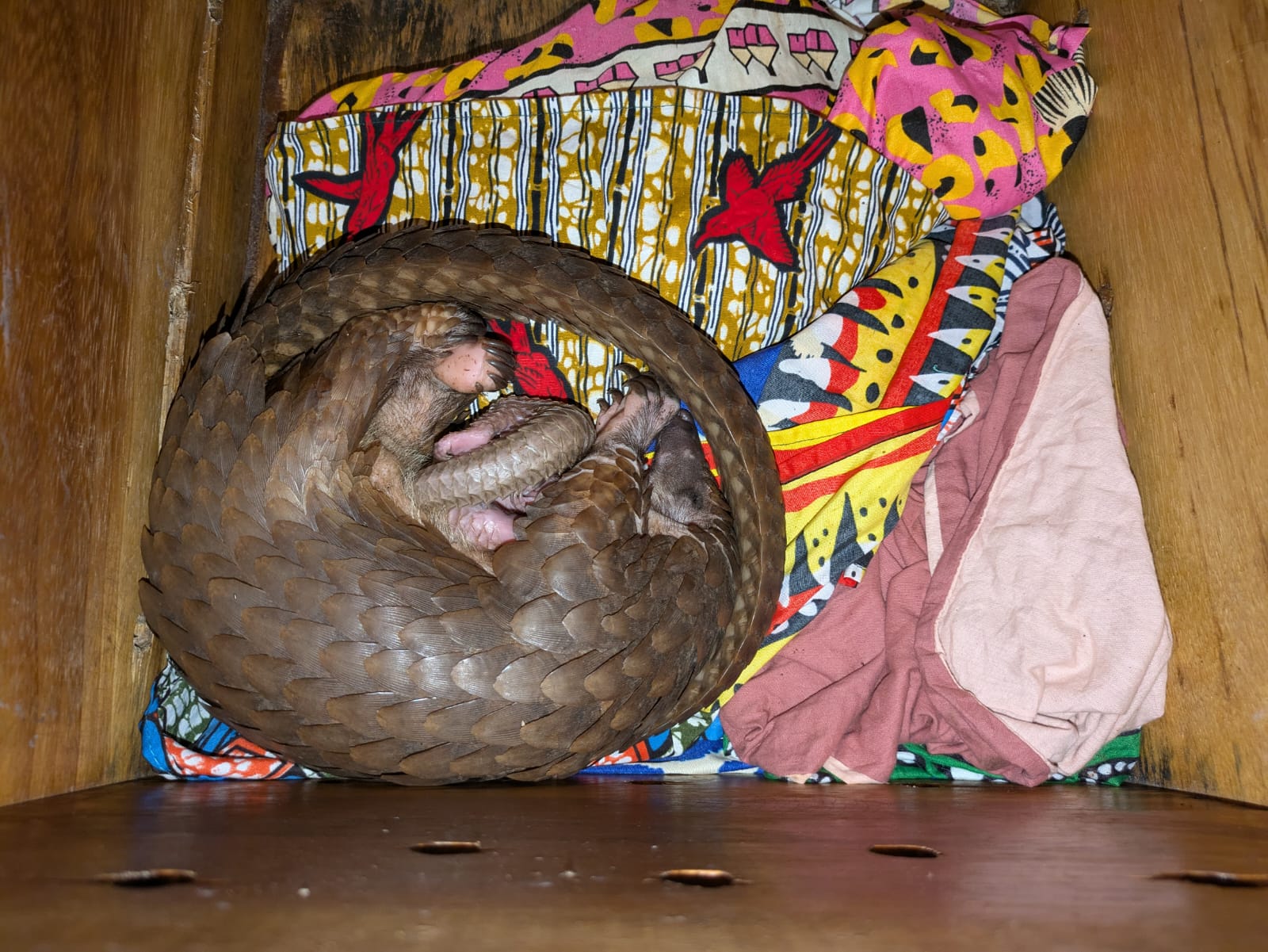Protecting Pangolins from Poachers in Cameroon’s Dja Faunal Reserve

Protecting Pangolins from Poachers in Cameroon's Dja Faunal Reserve
In early morning patrols late last year, in the villages of Echiembot and Bigongol, Eastern Cameroon, a team of eco-guards, supported by the African Wildlife Foundation (AWF), embarked on a mission that would save two pangolins from the clutches of poachers.
In the early hours of the morning, after hours of patrol, the eco-guards discovered a poachers’ hideout in Bigongol Village.
From outside the house, the guards could hear the distressed sounds of the pangolin inside, its tiny claws scratching against the wooden floor struggling to escape. The cries were desperate, a plea for freedom that traveled through the darkness and tugged at the hearts of the men in uniform.
The eco-guards moved swiftly but cautiously, knowing that any misstep could endanger the pangolin or alert the poacher. Their training had prepared them for moments like this.

Rescued Mother and Baby Pangolins in October 2024
The Rescue
They breached the door and apprehended the unsuspecting poacher. They took the scared pangolin, placed it in a secure carrier, and took it to the conservation center.
“We secured the perimeter around the house first, then carefully extracted the pangolin from the place where she had been kept behind the poacher’s house,” explained Cyrille Mekilo, one of the eco-guards who rescued the pangolins.
“Following protocol is essential, ensuring minimal stress for the animal during the rescue process."
Upon reaching the conservation center, the pangolin was carefully examined by the center's veterinary team. Despite the ordeal, the pangolin was found to be in good health, much to the rangers' relief.
Two weeks later, the team faced another heart-wrenching scene. In the village of Echiembot, they found a pregnant white-bellied tricuspid pangolin trapped and hidden in a poacher’s yard. The team of three eco-guards, alongside The African Wildlife Foundation staff, rescued it and transported it to the conservation service in Lomie.
The Pangolin Protection Unit
The eco-guards, who work with the Ministry of Forestry and Wildlife, helped by The AWF and funded by The European Union, patrol villages around the Dja Faunal Reserve, a sprawling 5,260 square kilometers UNESCO World Heritage site in the East Region of Cameroon, every day.
One of the rescued pangolins gave birth to a pup overnight in the AWF camp after being rescued. The other, who was found severely dehydrated, gave birth shortly after the rescue.
“These incredible events highlight both the vulnerability of pangolins and the efforts being carried out by the teams, including anti-poaching patrols and wildlife rescue, made possible through EU funding. The pangolins and their newborns were successfully transferred to the Tikki Hywood Foundation for specialized care and will be returned to the reserve when they are in better condition,” said Lesly Akenji, AWF senior landscape manager in Dja.
The pangolin is one of the most trafficked mammals. It is trafficked for its flesh and its scales. It is listed on the IUCN Red List as an endangered species and in protection class A: a species fully protected under the law governing forests and wildlife in Cameroon.

Rescued Mother and Baby Pangolin in January 2025
Why Are Pangolins Trafficked?
Pangolins are very easy prey because they are harmless. They are the only mammals covered in protective scales made of keratin—the same material as human nails.
Pangolins, often referred to as “scaly anteaters," measure up to 1.5 meters in length. They are solitary, nocturnal, and are rarely seen, even by seasoned researchers. They spend their nights foraging for ants and termites, using their long, sticky tongues to extract their prey from nests and mounds.
During the day, they retreat to burrows, hidden from the world. Yet, their quiet existence belies their critical role in the ecosystem. Without pangolins, forests would be overrun by ants and termites, disrupting the delicate balance of nature.
Pangolins have a lifespan of up to 20 years in the wild, though many face threats that drastically shorten their lives: habitat loss, poaching, and climate change. Female pangolins give birth to a single offspring, though twins can occasionally occur. The young pangolin, known as a pup, is born with soft, pliable scales that harden over time.
“For the first few months of life, the pup clings to its mother's back or tail as she navigates the forest in search of food. This bond between mother and pup is crucial for the young pangolin's survival, providing both protection and nourishment,” says Ruffin Ambahe, AWF’s biomonitoring officer who helped carry out the rescues in Dja Faunal Reserve.
The illegal wildlife trade continues to decimate their populations, driven by demand for their scales and meat. Their disappearance risks the invasion of our forests by termites and ants, which form their main food menu. By protecting our pangolins, we ensure the balance of our ecosystems.
Hope Reigns Supreme in Dja
In Cameroon's Dja Faunal Reserve, despite ongoing efforts, poaching continues to threaten endangered pangolins, alongside critically endangered western lowland gorillas, chimpanzees, and African forest elephants. Habitat loss due to expanding settlements and infrastructure exacerbates the problem, fueling the illegal wildlife trade and bushmeat market. AWF, with support from donors like UNESCO and the European Union, has been working since 2016 to combat these threats.
Between 2022 and 2024 alone, over 430 anti-poaching operations were conducted by rangers and community scouts. Since 2015, AWF, in partnership with the Ministry of Forestry and Wildlife (MINFOF) and local communities, has apprehended 26 poachers, seized over 6,000 kg of bushmeat, destroyed 315 poaching camps, and confiscated numerous weapons and traps.
“AWF also focuses on improving ranger capabilities through training in CyberTracker/SMART technologies and Rights-Based Conservation, ensuring both effective tracking and respect for human rights,” says AWF Dja Landscape Director, Lesly Akenji, as he notes the challenge of shifting long-held poaching practices but sees positive change as communities become more involved in conservation.